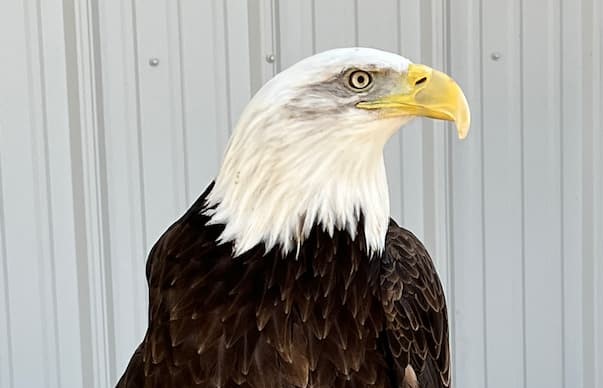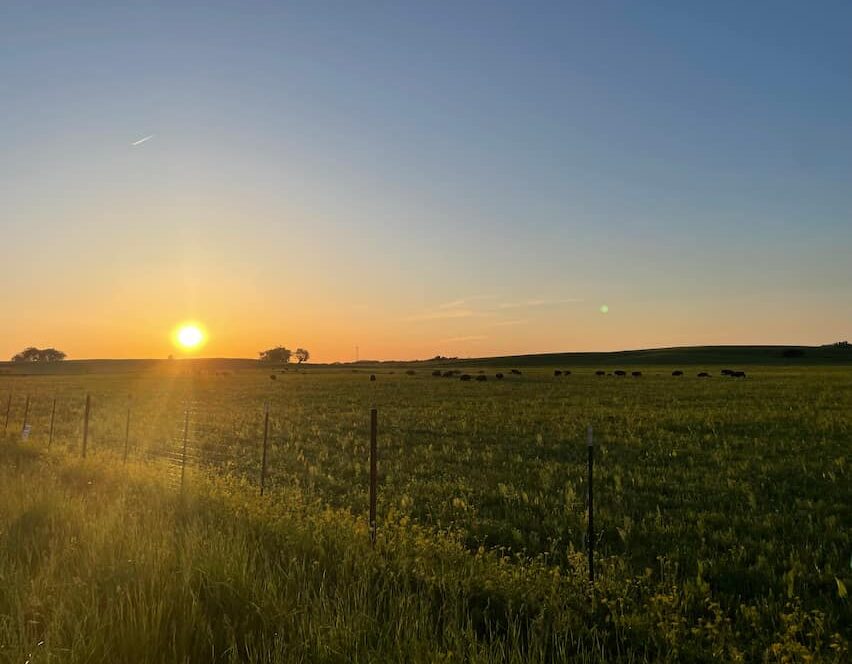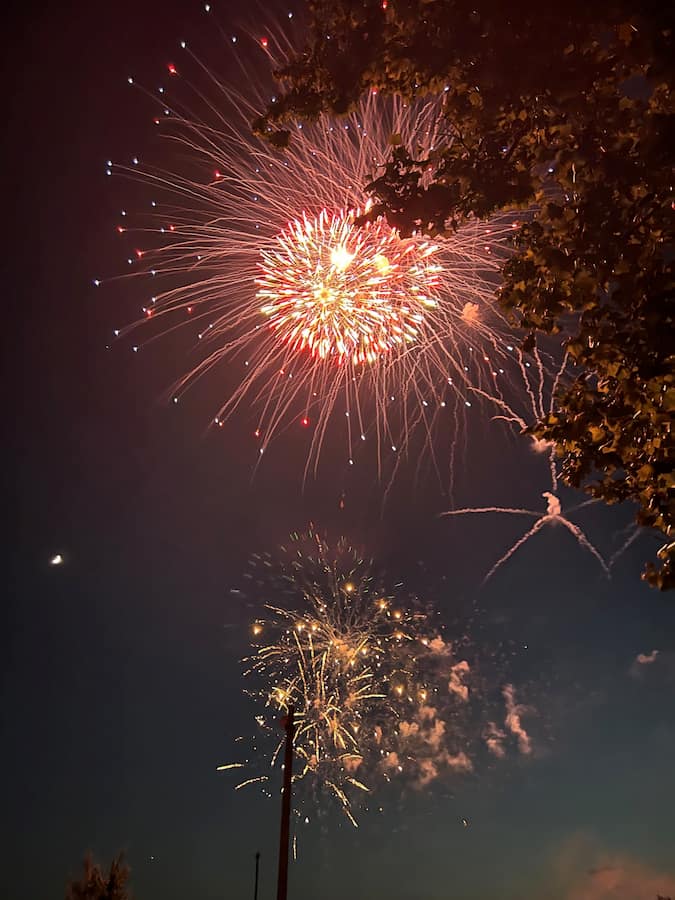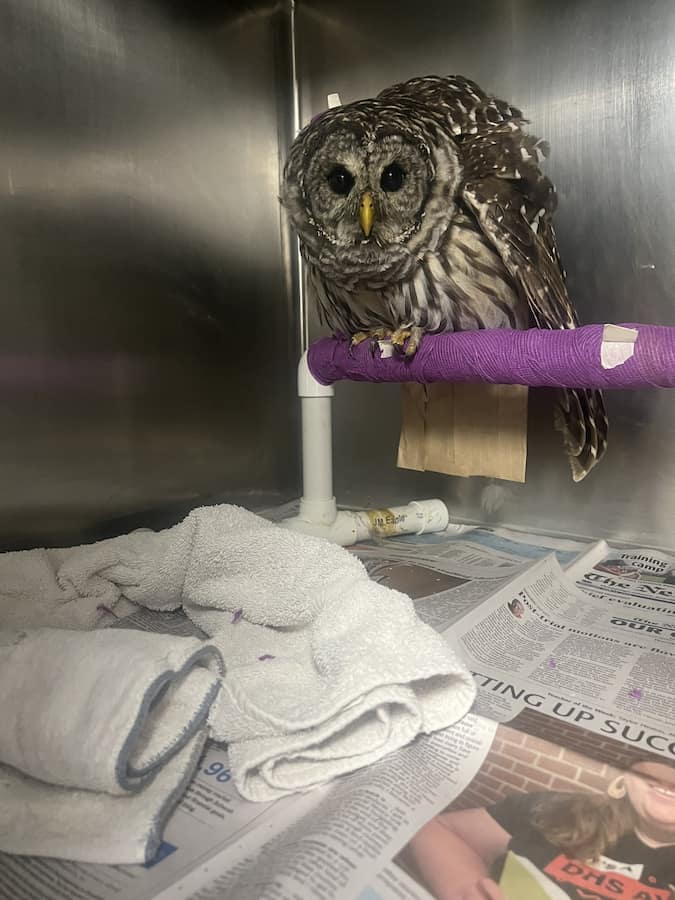Happy Independence Day! Our favorite American symbol at the Wildlife Medical Clinic is our bald eagle ambassador, River. Today’s Hawk Talk is all about bald eagles as a species and a little bit about River and her story.
Bald eagles are mostly brown with bright yellow feet, beak, and irises. As young birds, their heads are covered in brown feathers; the white feathers do not come in until the eagle is about 4-5 years old. These birds can live more than 30-35 years in the wild and often return to the same nesting ground every year with their lifelong mate. Females are typically larger than males, with respective average weights around 5.6 kg (12 lb.) and 4.1 kg (9 lb.).
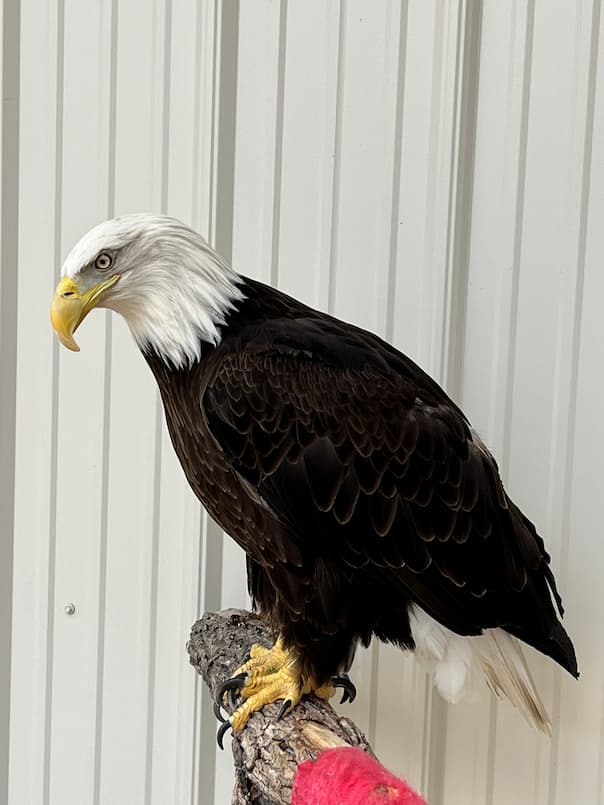
The bald eagle was selected as a national symbol in 1782, but did you know that the Founding Fathers argued for six years over what bird to pick? They ultimately chose the bald eagle because bald eagles are only found in North America and were seen to represent strength and freedom. However, Benjamin Franklin thought they should have selected the wild turkey instead, thinking turkeys to be a more “respectable” bird than the bald eagle.
Bald eagles were struggling in the wild in the mid-1900s. Humans were using a chemical called DDT to kill insects around their homes which, while super effective against pests, had severe, unforeseen impacts on bald eagles and many other bird species. DDT did not directly kill the eagles, but instead caused weak eggshells during nesting season. These eggs were not strong enough for the chicks to make it to hatching, and so the population of bald eagles (and many other birds of prey) plummeted. Bald eagles also suffered from hunting and habitat loss, and were put on the Endangered Species List in 1987.
With the U.S. and Canada banning the use of DDT and focusing efforts on conservation, Bald Eagle populations began to grow. As of 2007 Bald Eagles are no longer listed as an endangered species. However, they are still a protected species under the Migratory Bird Treaty Act and the Bald and Golden Eagle Protection Act. It is illegal to take any part of an eagle, its eggs, or nesting material without a permit.
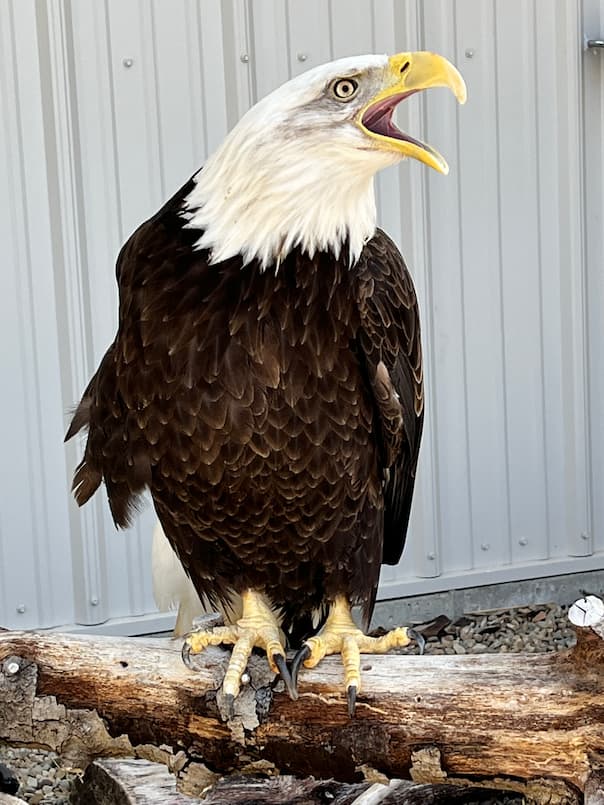
Our ambassador bald eagle was found in the Illinois River near Peoria in March of 2015 with a severely injured wing. Her right ulna and radius bones were both broken beyond what we were able to repair. With a partial wing amputation, we were able to remove the dying and damaged tissues which allowed her to survive this traumatic injury. However, bald eagles need to be able to fly to be successful in the wild, so she was considered non-releasable and needed a forever home such as a zoo or other similar institution.
We searched for a home for her but were unable to find the right fit. This led us to apply for a permit to keep her at the WMC and once it was official, we held a fundraiser to select her name. River was chosen as her name due to where she was found. We know based on her head feathers that she was about 4 years old when she came to the WMC, so she is currently about 12 years old. We recently had new flight cages and enclosures constructed for all our ambassador animals.
We made sure to include a permanent pool in River’s enclosure since bald eagles are typically found near rivers and large bodies of water as they like to hunt for fish and cool off in the shallows. While River is comfortable around our animal care staff, she is still not completely comfortable around new people, so she doesn’t travel off-site. However, you may see her in her outdoor enclosure and can learn more about her in our educational programs if you visit our facility.
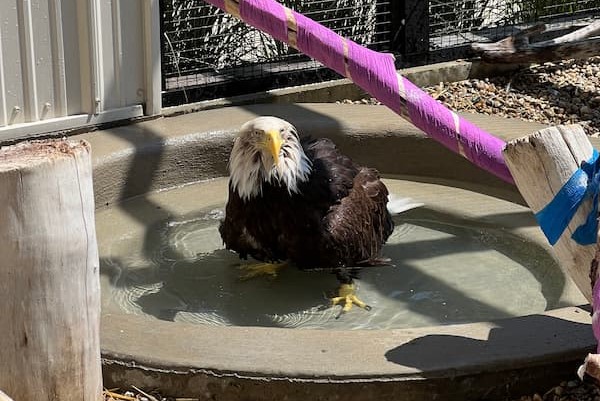
Written by Sarah, Class of 2026

